-

A map of Westport, Connecticut from 1878 created by O.H. Bailey & Co. Currently held at the Boston Public Library in the Norman B. Leventhal Map Center.
-
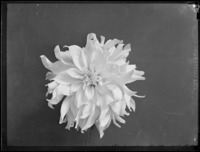
A black and white picture of a flower taken in 1935.
-
An advertisement for Vegetine, "the great blood purifier" for dogs.
-
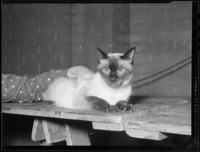
-

Almeda Marion Walker, Class of 1927, poses outdoors with a live raccoon. "Almeda M. Walker, 1927" Printed on back. "M.S.C. Collection" stamped on back.
-
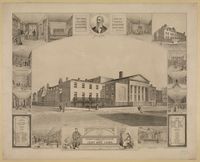
-
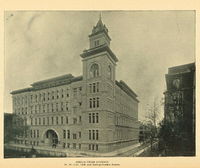
-
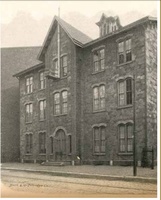
-
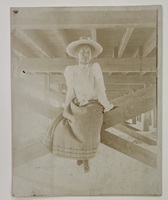
-
-
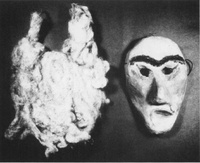
-

Broadway play, May 21, 1928-July, 1929
A play in three acts, The living room of Judge Hardy in a certain town in Idaho https://www.ibdb.com/broadway-production/skidding-9802
-
-
-
Dannett Transcript, 51
-

-
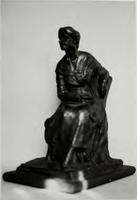
-
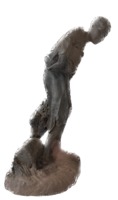
-
Newspaper article unnamed and undated. Article has a cut out photograph of Meta, facing right and looking diagonally up to the right, with her hair pulled back. Article title is 'We Wont' Tell'. The article is as follows: "Mrs. Meta Vaux Warrick-Fuller, noted sculptor, will celebrate her birthday next Saturday. We won't tell which one: that isn't important. Her work is as a painter and sculptor is well known in the country and abroad. Mrs. Fuller was born in Philadelphia and educated in the Industrial Art School, the Academie Collins and Academie Colarossi, Paris, France, and later in the Academy of Fine Arts, Philadelphia. She married Mr. Solomon Carter Fuller, of Monrovia, Liberia, West Africa, and there are two children, Solomon Carter, Jr., and William Thomas. She exhibited work in the Paris Salon, Jamestown Exposition, Academy of Fine Arts __ at private exhibits in Paris, ___ home is in S. Framingham. M(A)."
-
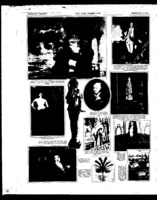
Newspaper article from the "New York Evening Post February 4, 1922" with a large photograph of Ethiopia Awakening and a small typed section "At right - "Ethiopia," by Meta Warrick Fuller, a negro pupil of Rodin: presented to the New York Public Library by the Negro section of "America's Making."
-
Newspaper article from a Daily Courant (part of name is missing) from February 14 (16), 1932. The title of the article is "Appear in Negro Achievement Week Program" and has three photographs beneath. Meta is mentioned at the end of the article "During the week, there will be an exhibition of paintings and sculture of Negro artists. About 25 paintings by Laura Wheeler Waring, a former Hartford girl, will be on view as well as the sculpture by Meta Warrick Fuller."
-
Newspaper clippings from St. Louis with the title "Negro Sculptor, Catholic, Has Had Meteoric Career". Article is mostly about Barthe. Meta is mentioned on the second clipping which is roughly circled in black ink: "Earlier American Negro sculptors have included Edmonia Lewis, who built up her reputation in the years after the Civil War. Most of her work was done in Italy, as was that of Eugene Warbourg, her contemporary, Miss Lewis' outstanding successor was Meta Vaux Warrick, born at Philadelphia in 1877. Miss Warwick made an international reputation..."
-
Newspaper article in two columns from an unknown newspaper, dated Sunday, May 16, 1920. Article is on two pages, with the second page including a photograph of the building. The article goes into details about fundraising and different areas of the building, like a mess hall, pool, and lounge. The article begins as follows: "Building for Colored Y.M.C.A to be Formally Opened Today The first of a series of exercises to be held in connection with the opening for use of the new Young Men's Christian Association building for colored men, at 146 Butler street, will be held at 3 o'clock this afternoon in the new gymnasium. Addresses will be made at the formal opening by Dr. R. R. Moton, principal of Tuskegee institute, and by Dr. J. E. Mooreland, senior international secretary of the colored department of the Y. M. C. A. in the United States. Prominent Atlantans, who will take part in the exercises are J. K. Orr, John J. Eagan, W. Woods White and Philip Colbert, general secretary of the central association on Luckie street. Professor John Hope, president of Morehouse college, will preside. An invitation to the formal opening has been extended to the white people of the city, for whom special seats will be reserved." Meta is mentioned on the second page: "On third floor is the Lobby, offices, men's game room and the gymnasium. A feature of the lobby, or loungeroom, is its wide, old fashioned fire place, over which hangs a bronze statue, entitled "Inspiration." It was designed by Mrs. Metta Fuller, of Boston, a pupil of the famous Rodin, of Paris, and represents an angel whispering into the ear of a downcast youth, pointing toward the rising sun, and bidding him rise for the sake of the unborn."
Butler St. YMCA
The Black City Hall of Atlanta
20-24 Butler Street (now Jesse Hill Street)
Sweet Auburn Historic District, Atlanta, Georgia
-
Very small newspaper article with no note on where it comes from. States "A portrait statuette of Maude Cuney Hare, the pianist, executed by the sculptress Meta Warrick Fuller, has been accepted by the Academy of Fine Arts, Philadelphia, and is now on exhibit at the Academy's 115th annual exhibition."
-
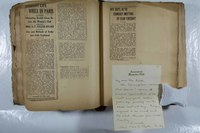
Short newspaper article, undated and unnamed. Title of the article is "Art Dept. Is to Conduct Meeting of Club Tuesday". There is a pencil arrow at the bottom right of this article that points to the letter (Eph1.41.153) below it. The article is as follows: "The meeting of the Women's Club next Tuesday will be in charge of the art department. Mrs. James Glass, chairman. The program will be given by Mrs. Rita Garrick Fuller, who will talk on "Student Days in Paris." Mrs. Fuller's work is well known in art circles and the afternoon is looked forward to with interest by club members. She will illustrate her talk with examples of her own work in sculpture and with pictures thrown on the screen of some distinctive types of sculpture and also of scenes and views in those parts of Paris more familiar to students than to tourists. Mrs. Fuller has spoken in other places on her subject, and is enthusiastic in her work and a thorough student of art in its highest sense. The afternoon promises to be one of the most profitable as well as enjoyable of the season. Tea will be served in charge of Mrs. Clarence Hall."














